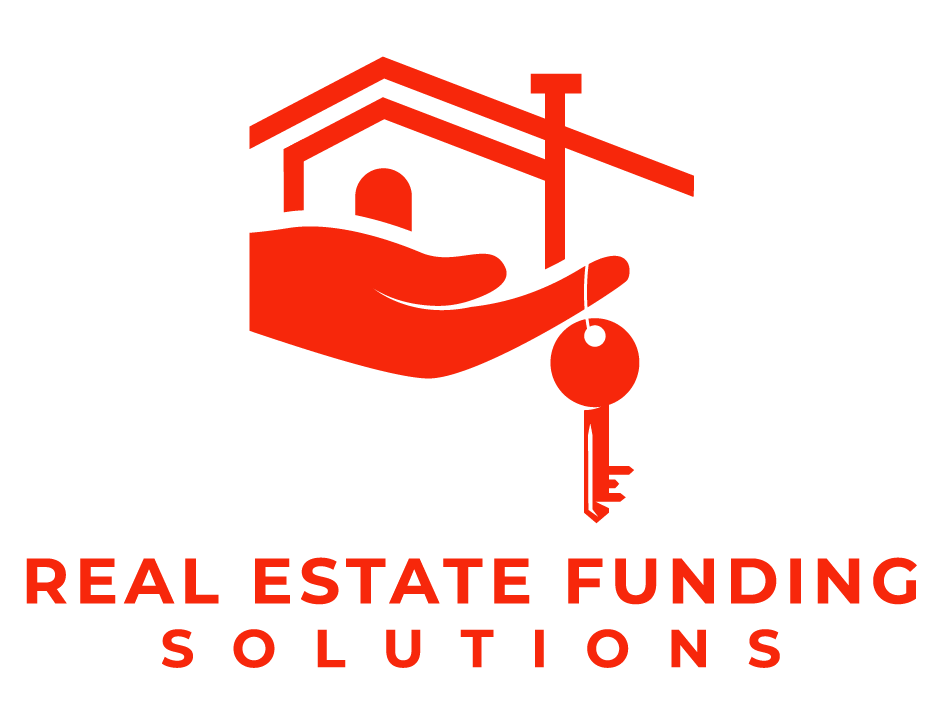When it comes to commercial real estate, finance rates play a significant role in determining the feasibility of an investment. Whether you’re an investor looking to purchase a commercial property or a business owner seeking financing for your own facility, understanding the different rates available is crucial. In this article, we will explore the factors that influence commercial real estate finance rates and provide you with the knowledge you need to make informed decisions.
From prime rates to fixed or adjustable interest rates, commercial real estate loans come with various options. We will compare different types of loans and break down the advantages and disadvantages of each. By the end of this article, you will have a clear understanding of the factors that influence commercial real estate finance rates, how to compare rates, and what to consider when choosing the best loan for your needs.
Whether you’re a first-time commercial real estate investor or a seasoned professional, this article will provide you with valuable insights to help you navigate the world of commercial real estate finance rates.
Understanding the factors that influence commercial real estate finance rates
Commercial real estate finance rates are influenced by a variety of factors. The most important factor is the overall health of the economy. During times of economic growth and stability, finance rates tend to be lower as lenders are more willing to provide financing. On the other hand, during economic downturns, rates may increase due to increased perceived risk by lenders.
Another key factor is the creditworthiness of the borrower. Lenders assess the borrower’s credit score, financial statements, and track record to determine the level of risk involved. Borrowers with a strong credit history and solid financials are more likely to receive lower rates compared to those with poor credit or limited financial resources.
Additionally, the type of property being financed can impact the finance rates. Lenders consider factors such as the property’s location, condition, and potential for income generation. Properties in prime locations with a high potential for rental income are generally viewed as less risky, resulting in lower finance rates.
Types of commercial real estate financing options
Commercial real estate loans come with various options, and it’s important to understand the advantages and disadvantages of each. The two main types of loans are fixed-rate and adjustable-rate mortgages.
1. Fixed-rate mortgages: With a fixed-rate mortgage, the interest rate remains the same throughout the loan term. This provides stability and allows borrowers to budget their expenses accordingly. Fixed-rate mortgages are a popular choice for borrowers who prefer predictability and are planning to hold onto the property for a longer period of time.
2. Adjustable-rate mortgages: Unlike fixed-rate mortgages, adjustable-rate mortgages (ARMs) have interest rates that can fluctuate over time. ARMs typically have a fixed interest rate for an initial period, after which the rate adjusts periodically based on market conditions. ARMs are suitable for borrowers who expect interest rates to decrease in the future or plan to sell the property before the rate adjustment period begins.
Each type of loan has its pros and cons, and it’s important to carefully consider your financial situation and investment goals before deciding which option is right for you.
How to compare commercial real estate finance rates
Comparing commercial real estate finance rates can be a daunting task, but with the right approach, you can make an informed decision. Here are some steps to help you compare rates effectively:
1. Research multiple lenders: Start by researching and contacting multiple lenders to gather information on their loan programs and rates. This will give you a broader perspective and enable you to compare offerings from different institutions.
2. Request loan estimates: Request loan estimates from the lenders you are considering. Loan estimates provide detailed information about the loan terms, interest rates, closing costs, and other fees associated with the loan. Review these estimates carefully to understand the true cost of borrowing.
3. Calculate the total cost of borrowing: When comparing rates, it’s essential to consider the total cost of borrowing over the life of the loan. This includes not only the interest rate but also any fees, points, or prepayment penalties associated with the loan. By calculating the total cost, you can get a clearer picture of which loan option is more cost-effective in the long run.
4. Consider the loan term: The loan term, or the length of time you have to repay the loan, can impact the overall cost of financing. Shorter loan terms generally come with lower interest rates but higher monthly payments. Longer loan terms may have higher interest rates but lower monthly payments. Consider your financial capabilities and investment goals when deciding on the loan term that suits you best.
5. Seek professional advice: If you are unsure about comparing rates or understanding the fine print, it’s wise to seek advice from a commercial real estate finance professional. They can help you navigate the complex world of finance rates and guide you towards the best option for your specific needs.
By following these steps, you can compare commercial real estate finance rates effectively and make an informed decision.
Importance of loan terms and conditions in commercial real estate financing
When comparing commercial real estate finance rates, it’s crucial to pay attention to the loan terms and conditions. The loan terms outline the specific details of the loan, including the repayment schedule, interest rate adjustments, prepayment penalties, and any other provisions that may impact your borrowing experience.
One important aspect to consider is the loan-to-value (LTV) ratio. The LTV ratio represents the loan amount compared to the appraised value of the property. Lenders typically have maximum LTV limits, and borrowers with a lower LTV ratio often receive more favorable rates. Therefore, it’s important to understand the LTV requirements of different lenders and how they may affect the finance rates offered.
Another factor to consider is the amortization period. The amortization period is the length of time it takes to fully repay the loan. A longer amortization period may result in lower monthly payments but higher overall interest costs. On the other hand, a shorter amortization period may lead to higher monthly payments but lower interest costs. Consider your cash flow and long-term financial goals when deciding on the most suitable amortization period for your needs.
Additionally, it’s essential to review any prepayment penalties or fees associated with the loan. Prepayment penalties are charges imposed by lenders if the borrower pays off the loan before the specified term. Understanding the prepayment terms is crucial, especially if you anticipate refinancing or selling the property in the future.
By carefully evaluating the loan terms and conditions, you can ensure that you choose a loan that aligns with your financial goals and minimizes unnecessary costs.
Evaluating the lender’s reputation and track record
When comparing commercial real estate finance rates, it’s not just about finding the best interest rate. Evaluating the lender’s reputation and track record is equally important. Working with a reputable lender can provide you with peace of mind and a smoother borrowing experience.
Start by researching the lender’s background and reputation. Look for reviews and testimonials from other borrowers to gauge their level of satisfaction. Additionally, check if the lender has experience in financing commercial real estate projects similar to yours. Lenders with industry expertise may be better equipped to understand the unique challenges and requirements associated with commercial real estate financing.
Furthermore, consider the lender’s track record in terms of loan approvals and customer service. A lender with a high approval rate and a reputation for excellent customer service is more likely to provide you with a positive borrowing experience. You can inquire about their average time to approve and fund loans, as well as their responsiveness to borrower inquiries and concerns.
Ultimately, choosing a lender with a solid reputation and a proven track record can give you confidence in your financing decision and increase the likelihood of a successful partnership.
Considerations for choosing the right commercial real estate finance option
Choosing the right commercial real estate finance option requires careful consideration of your specific needs and goals. Here are some key factors to keep in mind:
1. Financial capabilities: Assess your financial capabilities to determine how much you can afford to borrow and repay. Consider your cash flow, existing debts, and projected income from the property. This will help you determine the loan amount and terms that align with your financial situation.
2. Investment goals: Clarify your investment goals and time horizon. Are you looking for a short-term investment with a quick return, or are you planning for a long-term investment with steady cash flow? Your investment goals will influence the type of loan and repayment terms that are most suitable for you.
3. Risk tolerance: Evaluate your risk tolerance level. Different loan options come with varying levels of risk, and it’s important to choose a loan that aligns with your risk appetite. For example, if you prefer stability and predictability, a fixed-rate mortgage may be the best choice. On the other hand, if you’re comfortable with potential interest rate fluctuations, an adjustable-rate mortgage may offer more flexibility.
4. Property type: Consider the type of property you intend to finance. Different lenders may specialize in specific property types, such as office buildings, retail spaces, or industrial properties. Working with a lender experienced in financing your specific property type can provide valuable insights and expertise.
5. Long-term plans: Think about your long-term plans for the property. Are you planning to hold onto it for a significant period of time, or do you anticipate selling it in the near future? This will impact your choice of loan terms and conditions.
By carefully considering these factors, you can choose the commercial real estate finance option that best aligns with your needs and goals.
Common mistakes to avoid when comparing commercial real estate finance rates
When comparing commercial real estate finance rates, it’s important to be aware of common mistakes that borrowers often make. Avoiding these mistakes can save you time, money, and potential headaches. Here are some common pitfalls to watch out for:
1. Focusing solely on interest rates: While interest rates are an important factor, they shouldn’t be the sole criterion for choosing a loan. Consider the total cost of borrowing, including fees, points, and other charges associated with the loan.
2. Ignoring the fine print: Read and understand the loan terms and conditions thoroughly. Pay attention to any prepayment penalties, adjustable rate terms, or other provisions that may impact your borrowing experience.
3. Not comparing multiple lenders: Don’t settle for the first lender you come across. Research and compare rates and terms from multiple lenders to ensure you’re getting the best deal.
4. Overlooking the lender’s reputation: A low interest rate may seem attractive, but if the lender has a poor reputation or a history of unresponsive customer service, it may not be worth the hassle. Consider the lender’s reputation and track record before making a decision.
5. Failing to seek professional advice: If you’re unsure about the complexities of commercial real estate finance rates, seek advice from a professional. They can provide valuable insights and help you navigate the process.
By avoiding these mistakes, you can make a more informed decision and secure the best commercial real estate finance option for your needs.
Current trends and market outlook for commercial real estate finance rates
Understanding the current trends and market outlook for commercial real estate finance rates can provide valuable insights for borrowers. While it’s impossible to predict future rates with certainty, staying informed about market trends can help you make more educated decisions. Here are some current trends to consider:
1. Interest rate environment: The Federal Reserve’s monetary policies and overall economic conditions play a significant role in interest rate fluctuations. Keep an eye on the Federal Reserve’s announcements and economic indicators to gauge the direction of interest rates.
2. Impact of COVID-19: The COVID-19 pandemic has had a profound impact on the commercial real estate market. While interest rates have remained relatively low, lenders have become more cautious and may require additional documentation and higher credit standards.
3. Market demand and supply: Supply and demand dynamics in the commercial real estate market can influence finance rates. If the demand for commercial properties exceeds supply, lenders may offer more competitive rates to attract borrowers.
4. Economic indicators: Monitor economic indicators such as GDP growth, unemployment rates, and consumer confidence. These factors can impact the overall health of the economy and subsequently influence finance rates.
5. Inflation expectations: Inflation expectations can affect interest rates. If inflation is projected to increase, lenders may adjust their rates to compensate for the potential loss of purchasing power.
By keeping abreast of these trends and market outlook, you can make more informed decisions and take advantage of favorable finance rates.
Conclusion: Making an informed decision in commercial real estate financing
Choosing the right commercial real estate finance option requires careful consideration of various factors. By understanding the factors that influence commercial real estate finance rates, comparing rates effectively, and evaluating loan terms and conditions, you can make an informed decision that aligns with your financial goals.
Remember to consider your financial capabilities, investment goals, risk tolerance, property type, and long-term plans when selecting a loan. Avoid common mistakes such as focusing solely on interest rates, ignoring the fine print, and not comparing multiple lenders. Seek professional advice if needed, and stay informed about current trends and market outlook for commercial real estate finance rates.
By following these guidelines, you can navigate the world of commercial real estate finance rates with confidence and secure the best financing option for your needs.



